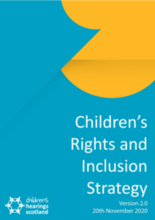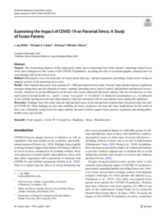Demographic Data
|
Sources: World Bank, UNDP, UNAIDS, DHS 2013 |
Displaying 3241 - 3250 of 14390
This research focused on a U.S. statewide program that uses team decision-making meetings to identify needs and plan services for youth who are at risk for instability while in foster care.
This paper documents the alignment between the circumstances created by anti-Black racism at institutional, provincial, and federal levels and the seemingly race-neutral eligibility criteria embedded within Ontario child welfare, which results in disproportionate reporting of Black families.
In this document, UNICEF calls for A Six-Point Plan to Protect our Children, a list of urgent actions to mitigate the worst effects of the COVID-19 pandemic and a practical recovery plan to safeguard child rights now and to reimagine a better future.
This webinar was part of Eurochild’s breakfast webinars to mark World Children’s Day 2020. This webinar looked at the intersection between children’s rights and democracy.
Eurochild, in partnership with its national members hosted a webinar series to bring a children’s rights perspective to Europe’s recovery. Questions addressed: What is an ‘economy of well-being’ & why & how does it prioritise children? Why is tackling child poverty a pre-requisite to sustainably exit the crisis? Why and how does protecting children’s rights strengthen our democracies?
The current paper aims to suggest a framework for risk and protective factors that need to be considered in child protection in its various domains of research, policy, and practice during and after the COVID-19 pandemic.
The Scottish Children’s Rights and Inclusion Strategy aims to ensure children feel able to speak openly and honestly in hearings, and that their views are given real weight in the decision making process.
This article presents data from the first large-scale study of fathers involved in repeat (or recurrent) care proceedings in England. The study consisted of three elements: an analysis of population-level administrative data from the Child and Family Court Advisory and Support Service (CAFCASS), a survey of fathers in pre-proceedings and care proceedings, and a qualitative longitudinal (QL) study of recurrent fathers.
This study used data from the Bucharest Early Intervention Project – a randomized controlled trial of foster care for children raised in psychosocially depriving institutions – to examine the associations of the caregiving environment with reward processing, executive functioning, and internalizing and externalizing psychopathology at ages 8, 12, and 16 years, and evaluated whether these associations change across development.
The overarching purpose of this exploratory study was to understand how foster parents’ parenting-related stress levels have changed over the course of the COVID-19 pandemic, including the role of sociodemographic characteristics in exacerbating risk for increased stress.




